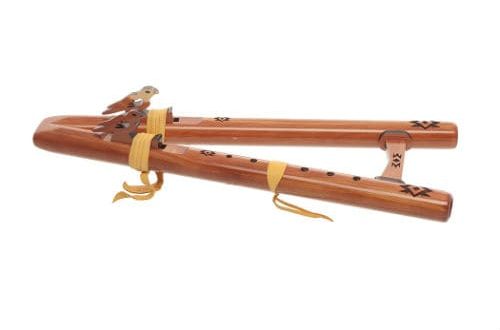
Flute: what is it, the structure of the instrument, sound, history of origin, types
The flute is one of the oldest musical instruments that has influenced many world cultures.
What is a flute
Type – woodwind musical instrument, aerophone. Belongs to the group of woodwinds, belongs to the class of labials. In music, it is used in all genres, from folklore to pop.
The Russian name of the instrument comes from the Latin name – “flauta”.

Structure
The classic version consists of a cylindrical elongated body, a cork, a sponge, a muzzle, valves and a lower elbow. The most common colors are brown, silver, dark red.
The great flute is characterized by a straight head. On alto and bass models, a curved one is used. Production material – wood, silver, platinum, nickel. Type of head – cylindrical. On the left is a cork that holds the instrument’s action.
There are 2 additional designs:
- Inline. Valves are located in one row.
- offset. Salt valve is located separately.
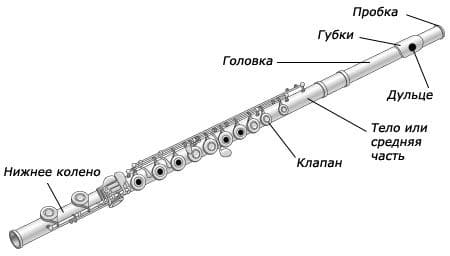
sounding
A flute creates sound when a jet of air crosses a hole, which creates a vibration. The blown air stream acts according to Bernoulli’s law. The musician changes the range of sound by opening and closing holes on the body of the instrument. This changes the length of the resonator, which is reflected in the frequency of the resonating surface. By controlling air pressure, the musician can also change the range of sound with one mouth.
Open models sound an octave lower than closed models of the same size. Large model sound range: H to C4.
Types
Unlike other musical instruments, varieties of flutes differ greatly in both structure and sound.
Flutes without a whistle device have the simplest design. The musician blows air into one hole, which comes out of the other with a sound. The sound is controlled by breath force and overlapped finger holes. An example is the traditional Indian kena. The standard length of the kena is 25-70 cm. It is used in the work of the indigenous peoples of South America. Similar variations without a whistle device are the Japanese bamboo shakuhachi and the Chinese wooden xiao flute.
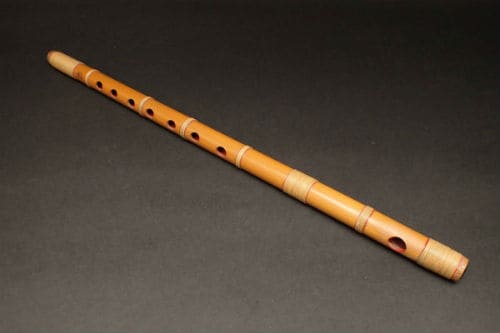
Aerophones with a whistle device produce a sound formed from the passage of an air stream through a special mechanism. The mechanism is called a mouthpiece, the performer blows into it. An example of a whistle version is the recorder. A block is installed in the head part. The bottom holes are double. The note is taken with the help of fork fingerings. The sound character is weak, transverse models sound louder.
A similar type is the flute. Common among Slavic peoples. It is characterized by a sound range of 2 octaves. Length 30-35 cm. Related Russian folk instruments: fife, pyzhatka, double zhaleyka.
The double flute is a paired design with a double whistle device. The Belarusian version is called a pair pipe. The length of the first tube is 330-250 mm, the second – 270-390 mm. When playing, they are held at an angle from each other.
Multi-barreled versions look like a series of stapled tubes of different lengths. The musician alternately blows into different tubes, the end of which sounds in a different timbre. Examples: siringa, panflute, coogicles.
The modern flute is made of metal. Sound characteristic – soprano. The pitch is changed by blowing and by closing and opening the valves. Refers to transverse aerophones.
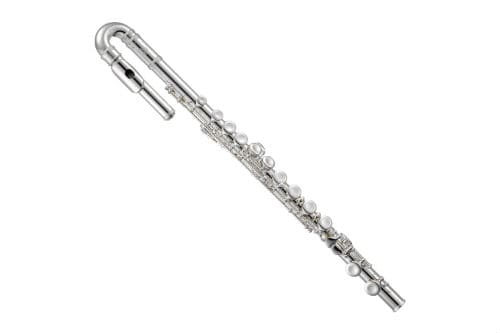
History of origin and development
The history of the flute goes back about 45 years. The forerunner of the flute is the whistleblower. This is the name given to primitive whistle tubes with two holes – for inhalation of air and its exit. The emergence of the flute is associated with the beginning of the appearance of holes for the fingers.
The remains of the oldest flute were found in Slovenia, at the archaeological site of Divye Babe. The approximate age of the find is 43 years. It is believed that this is the oldest found part of a musical instrument, and it could first appear on the territory of modern Slovenia. Most scholars attribute the invention of the Divya Baba flute to the Neanderthals. Slovenian researcher M. Brodar believes that the find was invented by the Cro-Magnons of the late Paleolithic era.
In the late 2000s, another ancient variation was found in Germany near Ulm. Has a small size. The five-hole design features a Y-shaped cutout for the performer’s mouth. Made from the bones of a vulture. Later, more ancient aerophones were discovered in Germany. Finds aged 42-43 years old were found in the suburb of Blaubeuren.

Several aerophones were found in the Hole Fels gorge, not far from the rock paintings. Talking about the find, scientists put forward the theory that it “shows the existence of musical customs at a time when modern people colonized Europe.” The scientists also said that finding the tool would help explain the cultural and mental differences between Neanderthals and early modern humans.
A bone flute that retained its playing properties was recovered from the Xiahu tomb in Henan, China. Along with her were another 29 broken copies with slight differences in structure. Age – 9 years. Number of finger holes 000-5.
The oldest surviving Chinese transverse flute was found in the tomb of Prince Yi. The Chinese call it “chi”. It may have been invented in 433 BC, during the late Zhou Dynasty. Body made of lacquered bamboo. There are 5 cutouts on the side. Chi is mentioned in the texts of Confucius.
The oldest written record of a wind instrument dates back to 2600-2700 BC. Authorship is attributed to the Sumerian people. Wind instruments are also mentioned in a recently translated tablet with a poem about GilPlaysh. The epic poem was written between 2100-600 BC.
Among the interesting facts: a number of Sumerian tablets known as “musical texts” were translated. The tables contain instructions for fine tuning the scales of musical instruments. One of the scales is called “embubum”, which means “flute” in Akkadian.
Flutes occupy an important place in Indian culture and mythology. Indian literature of the 16th century B.C. contains many references to cross-variation. Music historians believe that India is the birthplace of the cross version.
The longitudinal flute appeared on the territory of modern Egypt around 3000 BC. At present, it continues to be the main wind instrument in the Muslim countries of the Middle East.

In the Middle Ages, the transverse flute became popular in Europe, which is still popular today. In the XNUMXth century, longitudinal specimens came to Europe.
In the XNUMXth century, the French composer Jacques Otteter improved the structure of the instrument. Finger holes were equipped with valves. The result is coverage of the full chromatic sound range. The creation of a new design led to the fading of the popularity of the longitudinal recorder. Since the XNUMXth century, the updated flute has taken an important role in the orchestra. A symphony orchestra without this instrument began to be considered inferior.
In the XNUMXth century, Theobald Böhm made significant changes to the design. The craftsman arranged the holes according to acoustic principles, added rings and valves, installed a cylindrical cross-sectional channel. The new version was made of silver, making it look more expensive. Since then, the tool has not received major changes in design.
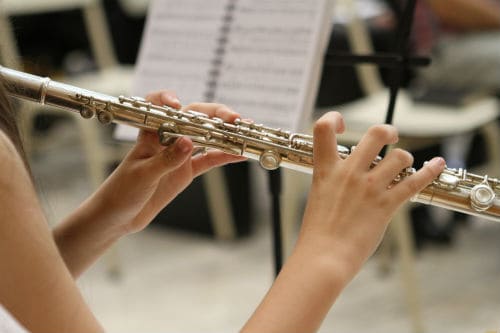
Notable flutists
One of the most famous modern flute players is the Italian Nicola Mazzanti. He recorded several albums entirely dedicated to the piccollo flute. He also publishes books on how to play the piccollo.
Soviet flutist Nikolai Platonov was awarded the title of Honored Artist of the RSFSR. His popular compositions are the opera “Lieutenant Schmidt”, “Overture for Symphony Orchestra”, “12 Etudes for Solo”.
American singer Lizzo, who performs alternative hip-hop, actively uses the flute in her songs. In 2020, Lizzo received a Grammy Award for Best Urban Contemporary Music Album.
In rock music, the band Jethro Tull was the first to use the flute. The instrument is played by the band’s vocalist Ian Anderson.




